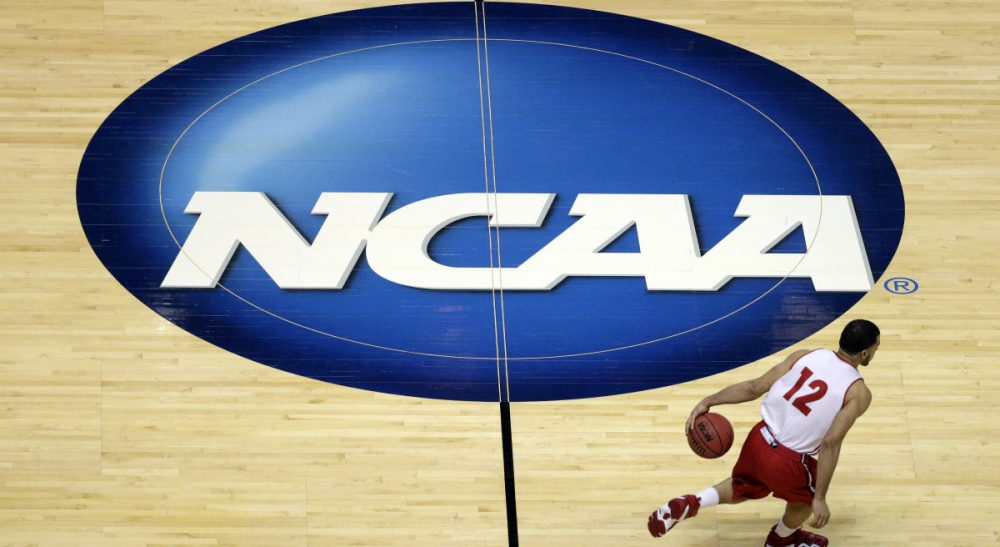Advertisement
Paid To Play: The End Of College Sports As We Know It

On Aug. 8, the NCAA suffered a significant legal defeat when federal Judge Claudia Wilken ruled that prohibiting payment to college athletes for the use of their names, images and likenesses violates federal antitrust laws.
The ruling, which came in response to a 2009 suit filed by UCLA basketball player Ed O’Bannon and 19 other athletes whose likenesses were used in video games, surprised few. Even the NCAA seemed to have anticipated it.
Players are now asked to spend forty hours or more a week practicing, studying film, lifting weights, working out, attending meetings. It’s not just football, either. It’s hockey, lacrosse, golf, swimming – you name it. And it’s happening across Divisions I, II and III.
A day earlier, college sports’ governing body loosened restrictions on the five biggest football conferences (plus Notre Dame). Those 65 schools are now free to set their own guidelines regarding the value of scholarships and players’ insurance. Stipends for players to cover the “full cost of attendance” at college could be next.
And in March, a regional office of the National Labor Relations Board gave Northwestern University’s football team the right to unionize, essentially declaring them employees of the school. That ruling is now being reviewed by the NLRB in Washington, D.C., and could be rescinded this fall. If it stands, however, the delightful prospect of player strikes, lockouts, arbitrators and collective bargaining agreements will become part of the college athletic landscape. The times, they are a’ changin’ in college sports.
The NCAA is, understandably, appealing Wilken’s ruling. The question of whether and how much to pay college athletes will likely be mired in the courts for the next several years. The issue might eventually wind up in the halls of Congress, where there is some support for offering the NCAA the antitrust status that Major League Baseball enjoys. This is a battle in its infancy, fanned by the huge television and apparel contracts NCAA football and basketball have been able to command in recent years. The whiff of big money has sent the lawyers into the locker rooms, and it’s not ending anytime soon.
One thing is clear, though: The tide is moving inexorably against the NCAA’s traditional definition of amateurism, just as it did a generation ago with the Olympic movement. The Olympics survived and have thrived since its athletes began being paid. College athletics will, too.
My own views on paying collegiate athletes have changed with the times. I had always been against the notion, believing the pleasant fiction that a scholarship leading to a good education was reward enough for playing a college sport. Plus, there are the intangibles: the prestige of competing for a major university; the self-confidence gained; the friendships forged; the lifetime of memories made.
But college athletics have changed greatly since my day. Players are now asked to spend 40 hours or more a week practicing, studying film, lifting weights, working out, attending meetings. It’s not just football, either. It’s hockey, lacrosse, golf, swimming — you name it. And it’s happening across Divisions I, II and III. Playing in college is a full-time occupation before the “student-athlete” even opens a book.
If he opens a book. Only 70 percent of college football players graduate within six years of enrolling. The rate for basketball is closer to 75 percent. Some top programs have graduation rates that are utterly appalling. Only 10 percent of the University of Arkansas freshmen basketball players who enrolled in 2006 graduated within six years. Powerhouse UConn graduated just 8 percent of its 2006 class within that span. Small wonder plaintiff lawyers have successfully argued that the all-powerful NCAA is exploitative.
Advertisement
In her 99-page ruling, Judge Wilkens suggests that universities could pay football players and Division 1 men’s basketball players through a trust fund, capped, she recommends arbitrarily, at no less than $5,000 a year. A four-year athlete would then have $20,000 waiting for them after they leave school, degree or no degree.
It’s a slippery slope, and the NCAA is now on it. College athletics is big business, and the athletes are finally getting a place at the trough.
Wilken’s ruling is anything but comprehensive, however. Title IX would seem to decree that if colleges are going to pay male athletes, they must also pay female athletes. And what about the student athletes who play baseball or lacrosse or hockey? All those sports are televised, too. Cheerleaders and members of the marching band might also like a piece of that television contract. There are lots of questions the judge left unanswered.
It’s a slippery slope, and the NCAA is now on it. College athletics is big business, and the athletes are finally getting a place at the trough. If the University of Alabama can afford to pay Nick Saban, its football coach, $7 million a year, it can certainly afford a $5,000 stipend for the players he sends onto the field. But what the NCAA really should do is limit the hours a day coaching staffs like Saban's can demand of their players, insuring more emphasis is placed on the "student" and less on the "athlete." Fat chance of that happening. The bowl appearances are too lucrative to turn back the dial now.
Which is exactly why the courts will continue to agree with plaintiffs who say the NCAA is exploiting its players. Until NCAA lawyers can truthfully argue their organization is doing all it can to ensure that every student-athlete leaves school with a college degree, they deserve whatever the judiciary throws at them.
Related:
